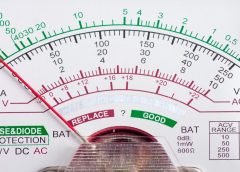Understanding the difference between amperage and voltage is crucial in the world of batteries and chargers. We’ll explain these complex electrical concepts, providing a comprehensive overview that ensures informed decision-making when purchasing batteries for various applications, such as RVs, marine vehicles, and mobility scooters.
What Is Amperage?
Amperage, or current, is the measure of the flow of electric charge through a conductor, such as a wire. Think of it like water moving through a pipe: the more water (charge), the higher the current. In electrical systems, electrons moving through a circuit carry this charge. Amperage is measured in amperes (A), and high currents generally indicate that more electrical energy is transferred.
Consider the amperage capacity when shopping for batteries. A battery with a high amperage rating can supply more current to a device, which is crucial for high-energy-consuming devices like RVs, marine vehicles, and mobility scooters. Batteries with high amperages can provide more power, allowing your devices to perform optimally and last a long time between charges.
What Is Voltage?
Voltage, unlike amperage, guides electric charges through a conductor—also referred to as electrical potential difference. Let’s return to the water in a pipe example. Voltage is similar to the water pressure that drives the flow. It is the measure of the energy per unit charge, which causes the electric current to flow in a circuit. Voltage is measured in volts (V), and higher voltages indicate a greater potential to deliver electrical energy.
The voltage is another critical factor to consider when selecting a battery. The battery’s voltage rating should match the device’s requirements. For example, a mobility scooter may require a 12-volt battery, while an RV might need a 24-volt battery. Choosing the correct voltage ensures your devices receive the appropriate power to function efficiently and safely. Of course, you can always connect multiple batteries in series configurations to achieve your desired voltage output!
Key Differences
Understanding the key differences between amperage and voltage can help you make more informed decisions when purchasing batteries and chargers for your devices. While amperage refers to electrical flow, voltage represents the force that drives this flow. Both factors determine a battery’s performance and compatibility with your devices.
When shopping for a battery charger, it’s essential to consider both the amperage and voltage ratings. A suitable charger should match the battery’s voltage while providing an appropriate charging current (amperage) to ensure efficient and safe charging. By understanding these key differences, you’re better equipped to choose the right charger for your application and ensure optimal device performance and longevity.
By understanding the difference between amperage and voltage, you can ensure well-informed decisions when purchasing batteries and chargers for your devices. Proceed confidently in your search for the ideal power solution!





